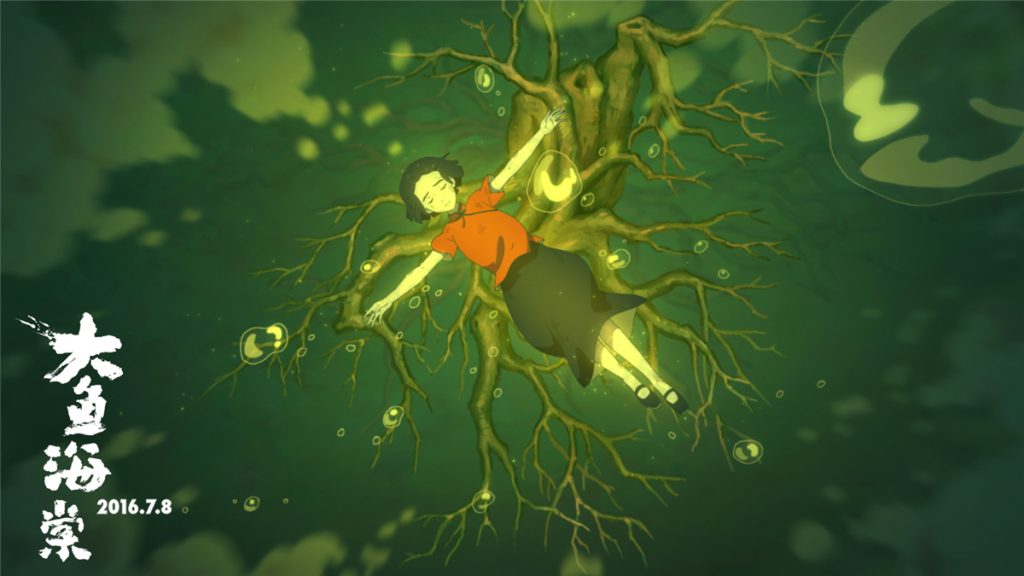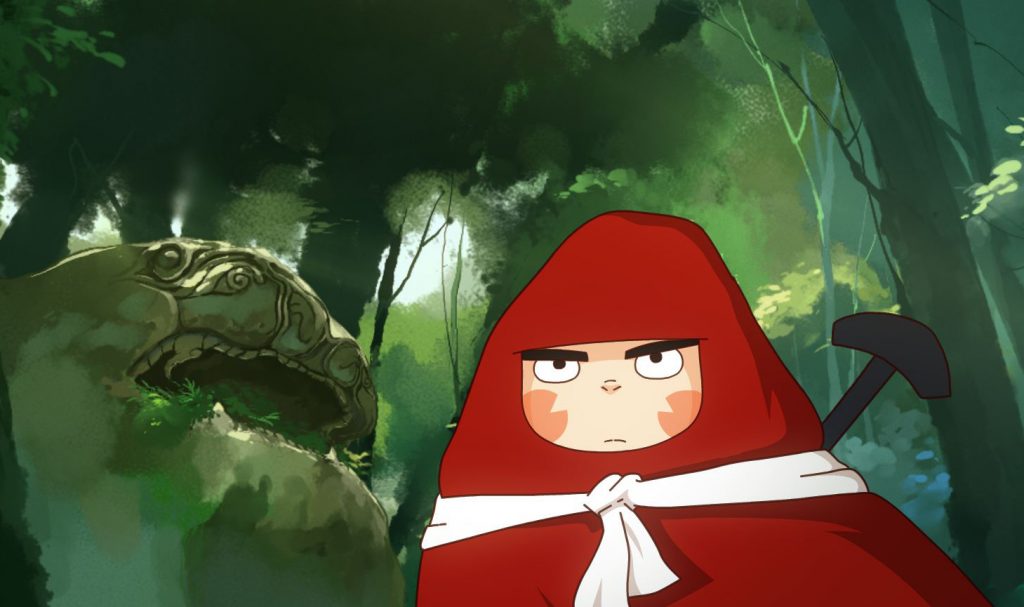The need to showcase notions of Chineseness deprives domestic animators of the simple pleasure of telling good stories through their films.

a still from ‘Big Fish & Begonia’
In recent years, animators have concerned themselves with the aesthetics of “Chineseness” — that is, ensuring that their works look quintessentially “Chinese” to viewers. Back in the 1980s, the Shanghai Animation Film Studio took inspiration from traditional ink brush paintings to give films like “Shan Shui Qing,” which loosely translates to “Impression of the Mountain and the Sea,” a distinctly Chinese feel. Since the studio’s decline, however, both artists and audiences have become anxious to recapture the golden age of the ’80s. In doing so, many domestic animators have betrayed nationalistic concerns about what it truly means to be Chinese, concerns that are intensified by the runaway success of Japanese and American animated films with instantly recognizable styles.
The domestic movie industry’s fixation on Chineseness means that whenever a new release displays certain cultural elements, the national media lauds it as having the “conscience of Chinese animation.” This somewhat unwieldy term was created by Chinese animators and refers to high-quality domestic works with supposedly unique aesthetics.
Somewhat cynically, however, producers of Chinese animated films now are leveraging the notion of “conscience” to hype up upcoming releases. The 2016 fantasy movie “Big Fish & Begonia” exemplifies how producers pandered to public expectations of Chineseness and thereby drowned out any attempt at storytelling. After a short trailer was released in 2004, media attention focused on the film’s unique visual style, which depicted a Taoist myth by mixing ink brush styles with expansive images of the Chinese countryside. But when the film finally came out in 2016, its vapid narrative disappointed domestic audiences. “Big Fish & Begonia” currently has a score of 6.6 out of 10 on Douban, a Chinese review website.
Ultimately, “Big Fish & Begonia” flopped because audiences rejected its subpar presentation of the richness of China’s cultural tradition, something that unsurprisingly plays a central role in shaping nationalist ideology. Recently, however, other films have escaped this narrow definition of nationalism by being playful, embracing diversity, and appealing to cultural traits that neither have roots in the traditional canon nor are defined by rigid definitions of the nation-state. “The King’s Avatar” is one such release.
Released in April last year, the film is adapted from a popular piece of online fan fiction published on the website Qidian.com. The story centers on Xiu Ye, a professional online gamer who is kicked out of his own team. Xiu then starts his own team, returns to the gaming world, and beats his former team to win a high-profile competition.
At first glance, “The King’s Avatar” does not look particularly Chinese. Indeed, the movie’s visual presentation is remarkably similar to Japanese anime. Crucially, however, its target audience consists of fans that care little about how “Chinese” their movies should appear; they are internet-savvy teenagers and young adults who spend a large amount of time playing online games. The success of “The King’s Avatar” begs two fundamental questions: First, is there any kind of film aesthetic that is unique to China? And second, is it even possible to attribute the aesthetic style of any film to national values?
The need to showcase notions of Chineseness deprives domestic animators of the simple pleasure of telling good stories through their films. On the film’s Douban page, some netizens even claim that “The King’s Avatar” represents the true conscience of Chinese animation. This claim is surprising, because it asserts that the film possesses distinctly national characteristics in spite of the fact that it ignores the country’s history, traditions, and art. It is also highly problematic, because it shows that both filmmakers and audiences overstate the importance of nationalistic tropes when judging the quality of the movies they watch. To those who make this claim, “The King’s Avatar” is good because it reveals something about being Chinese; but why can’t it just be a good film that is made in China?
Part of the success of “The King’s Avatar” is due to the fact that it is not made for viewers unfamiliar with the online fan fiction on which it is based; a strategy that, in effect, allows filmmakers to focus on making the movie appealing to its somewhat insular fan base rather than integrating cultural elements into the story. For instance, characters often use jargon that is inaccessible to those outside the gaming world; when someone yells “I am going to ‘OT’ now,” a small subtitle appears on the screen to briefly explain that “OT” is an abbreviation for “over threat,” a term used in the online gaming community to refer to a team member who has a higher score than others becomes a key target for the team’s opponents. However, the film gives no further context for why the protagonist changes his battle strategy after hearing the phrase “OT,” since online gamers need no further explanation. For the casual viewer, therefore, the inaccessibility of “The King’s Avatar” sends a clear message: You are not welcome. If you want in, go play some games first.
Younger Chinese, many of whom spend most of their time online, ignore the trend in their country’s animation industry to create work with national characteristics. They are simply watching the film as an extension of their gaming experience. In doing this, they have become a community that breaks down cultural barriers and embraces gamers from around the world. In this way, “The King’s Avatar” allows gamers, fans, sci-fi nerds, and postmodernists who reject notions of nationalistic aesthetics to escape this master narrative and get back to enjoying films.
–This article originally appears on Sixth Tone.








